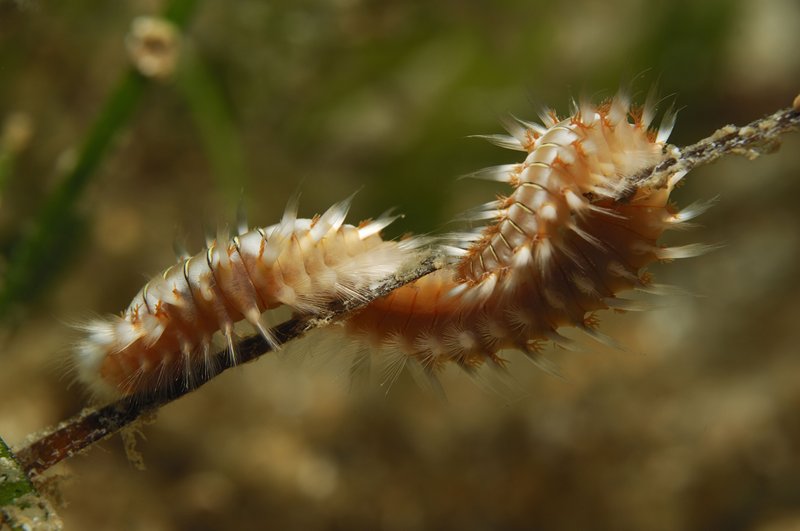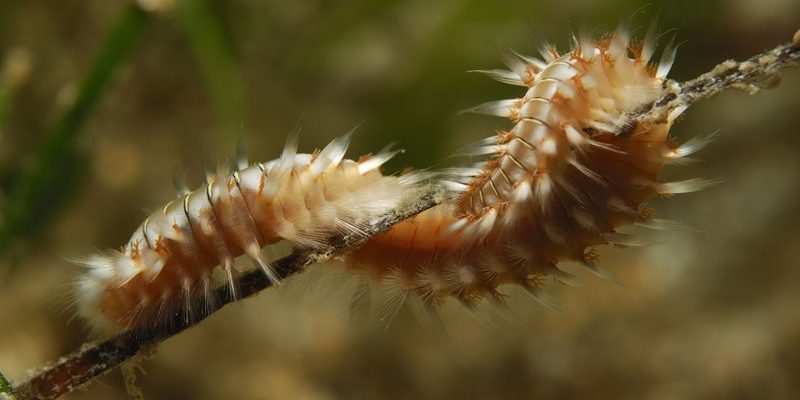
Bristle worms belong to a larger group called annelids, which includes a variety of segmented worms. Some of these worms are as pretty as a flower, with colorful bristles twinkling in the light, while others are the kind of creatures that can send a chill down your spine. Being able to tell the difference is essential for keeping your aquarium thriving. So, let’s get into how to spot those pest species you should be wary of.
Understanding Bristle Worms
Bristle worms are fascinating creatures. They’re often found in marine environments, and they play a role in breaking down organic material. Some of them can even help keep your tank’s ecosystem balanced. However, there are certain species that can be real troublemakers. To understand how to spot pest species, it helps to know what makes bristle worms unique.
First off, bristle worms have segments that can look a lot like tiny rings or bands. This makes them fascinating to observe! They have tiny, hair-like bristles protruding from their bodies, which can be a red flag. These bristles can deliver a sting if touched, so it’s best to appreciate them from a distance. You might be wondering, “How do I know if the worm in my tank is a pest or a helper?”
One key to identifying them is their color and size. While many harmless bristle worms are typically reddish or brown, problematic species may sport vibrant colors. You often find these pests in areas rich in food or waste. So, the next time you’re peeking at your tank, keep an eye out for these color clues!
Identifying the Pests
Now, let’s focus on spotting the bristle worm pests specifically. The most notorious pest species are usually larger and more colorful than their harmless counterparts. For example, if you see a bristle worm that’s green or bright red and is over several inches long, it’s wise to take a closer look.
Here are a few characteristics to keep in mind:
- Size: Pests are typically larger than 2 inches.
- Color: Look for bright or unusual colors that stand out.
- Bristles: If the bristles appear longer and are more robust, they may be from a pest species.
If you’re still unsure, try monitoring their behavior. Pests tend to be more active in their search for food, which can disturb other inhabitants in your tank. If you notice hyperactivity at feeding times or aggressive interactions, that’s a sign you might be dealing with a troublemaker.
Common Pest Species
Let’s dive into the specific species that are often considered pests. Knowing the names and traits of these worms can help you identify them quickly.
– **Eunice aphroditois**: This species, often called the “fireworm,” can grow quite large and is known for its painful sting. It typically has striking colors, making it stand out in your aquarium.
– **Nereis spp.**: These are commonly referred to as ragworms. They can be beneficial but turn into pests when their population is uncontrolled. They are often found tunneling in the substrate.
It’s important to familiarize yourself with these species so you can spot them if they appear. The quicker you identify these pests, the better you’ll be able to manage them.
Why Identification Matters
Understanding how to spot pest species of bristle worms is crucial for several reasons. First, unchecked populations can lead to imbalances in your aquarium, affecting coral health and other marine life. Pest worms can outcompete other organisms for food and disrupt your tank’s ecosystem.
Additionally, some of these bristle worms can become aggressive, harming your tank’s inhabitants. Managing their numbers is vital for maintaining a healthy environment for your fish and corals. The sooner you identify a potential pest, the easier it will be to address the issue before it spirals out of control.
What To Do If You Identify Pests
So, you’ve identified a pest bristle worm in your tank. What now? Don’t panic; there are definitely steps you can take to manage the situation.
1. **Manual Removal**: If you’re comfortable, you can remove the worm with tweezers or a net. Just be careful not to touch it directly, as those bristles can sting!
2. **Check for More**: After removing one, take some time to inspect your tank for others. These pests can multiply quickly, so it’s wise to do a thorough check.
3. **Adjust Feeding Practices**: Overfeeding can contribute to an increase in pest populations. Adjust your feeding routine to keep the tank cleaner and discourage pests.
4. **Consider Biological Control**: Sometimes, introducing natural predators can help keep pest populations in check. Just make sure these new additions won’t harm your existing tank inhabitants.
Preventing Bristle Worm Pests
Prevention is always better than cure. Keeping your tank clean and balanced is key to preventing pest bristle worms from taking over. Here are some tips:
– **Regular Maintenance**: Make a habit of cleaning your tank and removing uneaten food. This helps reduce the food supply for pests.
– **Monitor Water Quality**: Keep an eye on parameters like salinity, temperature, and nitrates. A healthy tank is less attractive to pests.
– **Limit Organic Waste**: Use a good filtration system to ensure organic material doesn’t build up in your tank.
By taking these proactive steps, you can reduce the chances of pest bristle worms taking residence in your aquarium.
Final Thoughts
Spotting pest species of bristle worms might seem daunting at first, but with a little knowledge and observation, you can become quite skilled at it. Remember, these worms can be both helpful and harmful, depending on the species. By understanding their traits and behaviors, you can maintain a healthy aquarium environment.
So, the next time you’re peering into your tank, pay attention to those little wigglers. With an eye for detail and a proactive approach, you’ll keep your aquarium flourishing and free from unwanted pests. Happy tank keeping!

